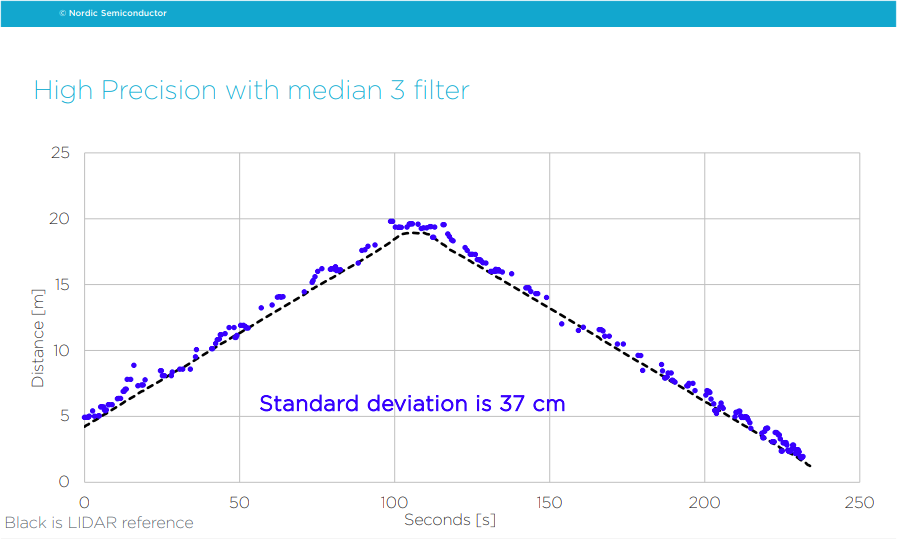There’s a useful recent Webinar at Nordic Semiconductor on Measuring distance with the Nordic Distance Toolbox. The Nordic Distance Toolbox (NDT) provides ways to measure the distance between two Nordic SoCs. An SoC (System on a Chip) is the main chip found in beacons and Nordic is one of the main manufacturers.
The webinar covers the theory of distance measurement based on radio phase, RSSI, Round Trip Timing (RTT) and processing such as Inverse Fast Fourier Transform (IFFT). Practical performance is measured and the conclusions are:
- Phase based ranging gives best accuracy but is range limited maximum range is limited to 8 to 10m (in the office environment)
- RTT gives lower accuracy (Standard deviation 3.8m) but can be used up to the maximum Bluetooth connectivity range that can be several 100 metres
- High precision with a median 3 filter gives the best accuracy (Standard deviation of 37cm)

The presentation PDF is also available.
Using the SoC radio to determine distance is power-hungry, relatively complex to develop and, as the above shows, doesn’t result is very good accuracy. If you want to measure distance it’s simpler, more accurate and more battery-efficient to use a dedicated hardware-based distance sensor. For example, the IBS03R uses a dedicated time of flight (TOF) sensor to achieve accuracy of +-25mm and a battery life of 1.8 to 2.8 years.